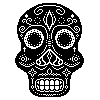Ordinals creator sees his Bitcoin-centric creation as “digital artifacts,” not just NFTs • TechCrunch
Ordinals, a Bitcoin-based The NFT-like project has expanded significantly over the past two weeks, but its creator, Casey Rodarmor, said he had no idea it would explode.
“I thought I was building something good, and I thought I was meeting an unmet market need that NFT collectors had expressed a desire for,” Rodarmor told TechCrunch.
By the current market response, his creation actually met this demand.
About 122,500 ordinals have been entered, which is jargon for created (or minted), to date, according to data from Dune Analytics. The number of total inscriptions is up 40% from about 88,000 on Tuesday. On February 8, the number of signed Ordinals peaked above 21,000, and Wednesday was the second highest day with over 17,7000, the data showed.
The Bitcoin community has been somewhat divided on whether NFTs on their blockchain are a good thing. While many see them as a positive and fun way to expand their ecosystem, some “Bitcoin maximalists” object that they take up block space on the network and make transaction fees more expensive, among other things.
“My theory as to why this exploded is [the community] saw this controversy, but then they saw exactly what they wanted – on-chain, immutable NFTs that are there forever. Like, hell yeah, sign me up,” Rodarmor said.
Rodarmor’s Genesis Inscription, which is the first Ordinal Inscription – or Inscription 0 – was a “tiny pixel art” of a skull that marked the beginning of it all, he said. The photo was time-stamped on December 14, according to the Ordinals website. It celebrates the first block mined on the Bitcoin blockchain, which is commonly known as the Genesis Block. “It’s very simple, but I’m proud of it,” he added.

Image credit: Ordinal inscription 0 (opens in new window)
The second inscription, Inscription 1, was made three days later. It is a picture of the infamous CryptoDickbutts NFT. No, it’s not a typo.
Rodarmor is a long-time Bitcoiner and programming artist. He said he has made art with code in the past, but it was always a hobby before he created Ordinals. In 2021, when NFTs started gaining interest, he saw the space as something he wanted to dive into, “even as a hardcore Bitcoiner who saw altcoins as uninteresting,” he joked.
In early 2022, Rodarmor decided he wanted to figure out a way to create NFTs on top of Bitcoin’s chain. “So I came up with Ordinals, or Ordinal theory, tongue in cheek.”


